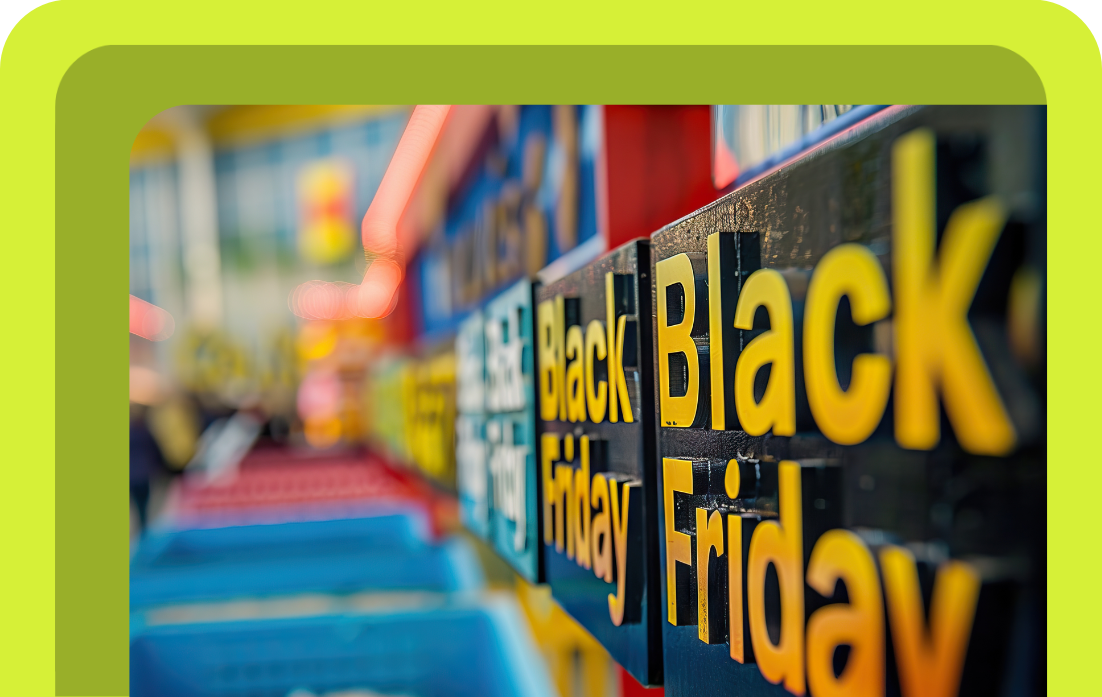How Combining eCommerce SEO and CRO Drives Traffic and Sales

Isn’t it funny how much time and money we spend trying to get people to visit our online stores? In fact, sellers spend up to 40% of their gross revenue on marketing services. Whether you’re on Shopify SEO, WooCommerce, Ecwid, or another platform, it’s all about those clicks. I totally get it – more traffic usually means more sales, right? Well, not always.
Working with many eCommerce brands over the years, I’ve seen countless sellers pour their hard-earned cash into digital marketing agencies, all in the name of boosting site traffic. They get the clicks, but then… nothing. No sales, no new customers. Just crickets. It’s so frustrating, and I’ve seen many sellers ready to give up, blaming their marketing firm for their lack of success.
But here’s the thing: sometimes it’s not the marketing company’s fault. As I always tell my clients, marketing great for grabbing attention, but they don’t guarantee a sale – your website has to do that. If your site isn’t optimised to turn visitors into buyers, all that traffic is basically going to waste. This is where SEO (Search Engine Optimisation) and CRO (Conversion Rate Optimisation) come in as your powerful allies.
Key Topics
Attracting Visitors is Just the First Step
Imagine you’ve invited your mother-in-law over for dinner. You’ve spent hours preparing an incredible meal and making sure everything looks perfect. This is your SEO – you’ve done everything to get her to show up.
But when she arrives, the house (your eCommerce store) is a mess, there’s nowhere to sit (your website navigation is confusing), and the kitchen (your product collection) is in chaos. No matter how great the food (your product) is, her experience will be ruined. In fact, the terrible appearance of your house could even damage her view of you (your overall brand).
This is exactly what happens when you focus only on SEO. You might get people to visit your site, but if the experience is poor, they won’t stick around. Even worse, they might never come back.
So, How Do You Get Your Visitors to Stay?
Alright, so you’ve got the traffic flowing to your eCommerce site. Your SEO game is strong, and you’re getting those clicks. But here’s the million-dollar question: How do you get those visitors to stay and actually make a purchase? This is where the magic of eCommerce CRO (Conversion Rate Optimisation) comes into play.
What is Ecommerce CRO?
CRO, or Conversion Rate Optimisation, is all about improving your website to turn those visitors into customers. Think of it like going on a date. SEO is like setting up the date – picking a great restaurant, dressing up nicely, and making sure you’re on time.
But CRO is everything that happens during the date. If you spend the whole evening talking about your ex, it doesn’t matter how good you look or how nice the restaurant is – your date will quickly lose interest and won’t stick around for dessert.
In eCommerce, this means making your site as effective as possible in converting clicks into sales. And when we say conversion, it’s not just about sales but also engagements like these:
- Signing up for a newsletter
- Adding items to the cart
- Creating a user account
- Downloading a product brochure or guide
- Sharing a product on social media
- Leaving a product review
- Watching a product video
- Clicking on a promotional banner
- Requesting more information through a contact form
- Participating in a survey or poll
- Engaging with a live chat feature
- Clicking on related product recommendations
- Using a discount code or coupon
- Signing up for a loyalty or rewards program
- Booking a consultation or demo
Each of these actions brings visitors closer to becoming loyal customers, just like how a well-planned wedding ensures guests have a memorable time and rave about it afterward.
The Key Differences Between SEO and CRO
SEO and CRO are like soulmates – a match made in heaven. While SEO focuses on bringing visitors to your site, CRO ensures those visitors have an unforgettable experience and are more likely to become loyal customers.
Together, they create a seamless and effective strategy that not only attracts traffic but also converts it into sales. Here’s why this dynamic duo is essential for your eCommerce success:
- User Experience: SEO brings visitors in, but CRO ensures they have a great experience. A well-optimised site is easy to navigate, loads quickly, and looks great on any device. This keeps visitors engaged and reduces bounce rates.
- Compelling CTAs: Good CRO means having clear, persuasive calls to action. Whether it’s “Add to Cart,” “Buy Now,” or “Sign Up,” these CTAs guide visitors toward making a purchase. Without them, your SEO efforts just lead to dead ends.
- Building Trust: SEO might get people to your site, but CRO builds trust. Including reviews, testimonials, and secure payment options reassures visitors and encourages them to complete their purchase.
- Data-Driven Decisions: SEO gets you traffic, and CRO turns that traffic into actionable insights. By analysing how visitors interact with your site, you can make data-driven improvements that enhance both your SEO and CRO efforts.

How to Boost eCommerce Conversions by Using CRO and SEO
If you want to beat the global average conversion rate of 2.5%, start by optimising these top 10 essential elements of your eCommerce site. Trust me, a few tweaks can make a huge difference!
Here’s how to integrate SEO and CRO to maximise eCommerce conversions and watch your sales soar.
1. Optimise Your Homepage
To make your homepage a magnet for both visitors and conversions, start by using relevant keywords in your title tag, meta description, and header tags to attract search engines. Ensure your homepage loads quickly and is mobile-friendly to keep visitors from bouncing off. Then, design a clean, intuitive layout with clear navigation and compelling CTAs like “Shop Now” or “Browse Collections.” High-quality images and customer testimonials can build trust and make a great first impression.
2. Enhance Your Product Pages
Your product pages are where the magic happens. Optimise product titles, descriptions, and images with relevant keywords so search engines can easily find and rank your products. Use structured data markup to help search engines understand your product details. On the CRO side, provide detailed, engaging product descriptions, high-resolution images, and videos to capture your visitors’ attention. Make sure your “Add to Cart” buttons stand out and include reviews and ratings to build credibility.
3. Improve Your Category Pages
Category pages need a blend of SEO and CRO magic. Use keyword-rich titles and descriptions for each category to help search engines understand and rank these pages. Ensure each category page has unique content and meta tags. For CRO, make it easy for users to filter and sort products, and use clear headings and subheadings for a smooth navigation experience. This way, visitors can find what they’re looking for without frustration.
4. Perfect Your Site Search Functionality
5. Leverage Your Blog
A blog can be a powerhouse for both SEO and CRO. Create valuable content around keywords relevant to your products and industry to attract organic traffic. Use internal linking to direct readers to your product and category pages. For CRO, include CTAs within your blog posts that guide readers to related products. Engaging headlines and visuals can capture interest and reduce bounce rates, keeping visitors on your site longer.
6. Streamline Your Checkout Process
The checkout process should be seamless for both SEO and CRO. Optimise your checkout pages for speed and mobile usability, and ensure they use secure HTTPS protocols. Simplify the checkout process by reducing the number of steps and forms, and offer multiple payment options. Show trust badges to reassure customers and increase the likelihood of completing a purchase.
7. Optimise Your Navigation Menu
8. Showcase Customer Reviews
Customer reviews are gold for both SEO and CRO. Allow reviews to be indexed by search engines using schema markup, and encourage customers to leave reviews with automated follow-ups. Display reviews prominently on product pages to build trust and influence purchase decisions. Highlight top reviews and average ratings to give potential buyers the confidence they need to make a purchase.
9. Speed Up Your Site Performance
Site speed is crucial for both SEO and CRO. Optimise images, leverage browser caching, and use a Content Delivery Network (CDN) to improve page load times. Ensure a fast, smooth browsing experience across all devices. Use tools like Google PageSpeed Insights to continuously monitor and improve performance. A fast site keeps visitors engaged and reduces bounce rates, leading to higher conversions.
10. Optimise for Mobile Users
Ready to Cook Up eCommerce Success?
Combining SEO and CRO is like finding the perfect recipe for eCommerce success. SEO ensures your online store is easily discoverable, while CRO turns those visitors into loyal customers. This powerful combination creates a seamless experience that attracts, retains, and converts your audience.
At Webfuel Digital, we don’t just focus on SEO; we offer hybrid SEO solutions that integrate CRO into our eCommerce strategies. Whether it’s a complete website revamp or subtle design tweaks, we optimise every aspect of your online store to drive real results.
Ready to see the magic in action? Reach out to Webfuel Digital today, and let’s start crafting your perfect recipe for eCommerce success!





